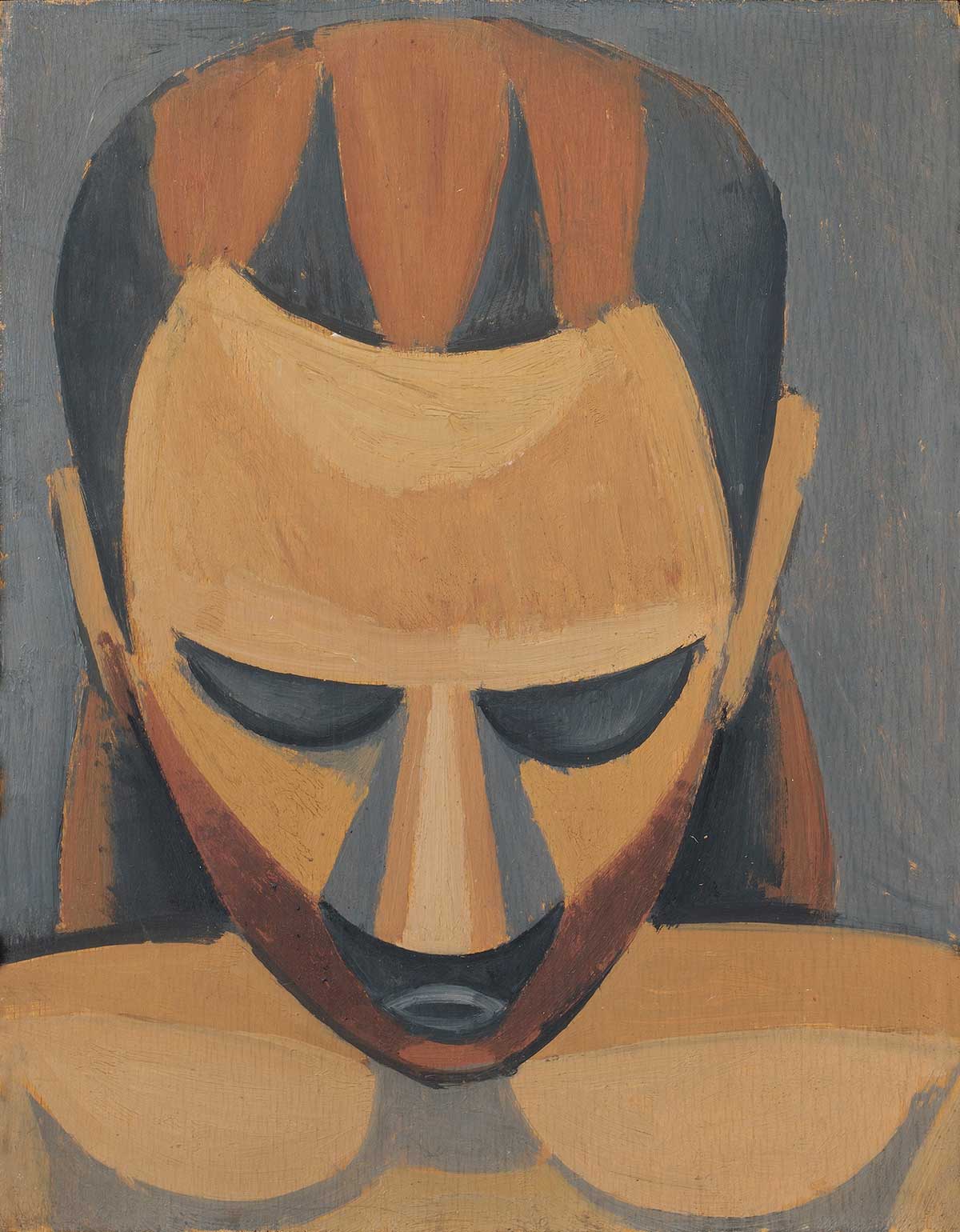
Head of a Man (Tête d’homme), 1908
Pablo Picasso
Head of a Man (Tête d’homme), 1908
Oil on woo
27 x 21 cm
Hermann und Margrit Rupf-Stiftung, Kunstmuseum Bern
© Sucesión Pablo Picasso, VEGAP, Madrid, 2016.
“In my opinion to search means nothing in painting. To find is the thing.”, Pablo Picasso [1]
In the early 20th century, Pablo Picasso (Málaga, 1881—Mougins, 1973) moved permanently to France, after having spent some time living between Barcelona and Paris. In the summer of 1907, Picasso met Daniel-Henry Kahnweiler (1880–1962), who became his primary dealer. During this period, Picasso and Georges Braque (Argenteuil-sur-Seine, 1882—Paris, 1963) were experimenting with new forms of representation. Fascinated by Picasso’s work, Kahnweiler took his friend, the collector Hermann Rupf (1880–1962), on a visit to Picasso’s studio. At this initial meeting, Rupf decided to purchase two gouaches, and he thus became one of the first collectors of Picasso’s works [2].
The collaboration between Pablo Picasso and Georges Braque grew closer and closer. Even though the two artists worked independently, each in his own studio, they often met to discuss their progress and learn from each other. Together they ushered in a style known as Cubism, which rejected traditional ways of representing three-dimensional space, such as perspective and foreshortening. It also refuted all the enshrined theories which viewed art as an imitation of nature [3]. Cubist works spotlighted smooth surfaces, two-dimensionality, the pictorial plane and the objects captured via geometric planes which decompose and fragment the shapes so that the different sides of the objects are seen simultaneously [4].
One of Picasso’s first Cubist works was Head of a Man (Tête d’homme, 1908). In this work, Picasso painted facial features using geometric shapes instead of creating a figure with soft features. He also used different planes of overlapping color to create volumes.
Head of a Man, along with Demoiselles d’Avignon (1907), were crucial works in Picasso’s career, since they signaled the beginning of the artist’s journey from the figuration of his early works to Cubist abstraction. Demoiselles d’Avignon signals a radical departure from traditional composition and perspective in painting and heralds the beginning of Cubism.
Head of a Man may also show the inclusion of elements from non-Western cultures: the palette of browns and grays and the man’s simplified facial features are reminiscent of the African wooden masks that Picasso discovered in the Trocadero Ethnographic Museum in Paris [5]. The snub nose, large eyes and shape of the mouth refer to Picasso’s “African period”, which lasted from 1906 until 1909 [6].
Preguntas
Carefully look at the portrait that Picasso painted. Describe the facial features that you see in the image. What is the head like? What position is it in? What are the eyes like? Do you think they are open or closed? What is the shape and size of the nose? How would you describe the mouth? How is this portrait different from other portraits you are familiar with?
In the works that Picasso painted between 1906 and 1909, we can see the influence of the African masks that the artist saw in the Trocadero Ethnographic Museum in Paris. Compare Head of a Man with the Mbangu mask from the Democratic Republic of the Congo, which is housed in the African Museum of Tervuren. In what ways are they similar and different? You can find a photograph of the mask at: http://www.africamuseum.be/home/treasures/Mbangu-oct2011/image/image_view_fullscreen
Now compare Picasso’s work with Head of a Woman (1909) created by his fellow painter Georges Braque, with whom Picasso co-founded Cubism. In what ways are these works similar and different? Write two parallel lists of similarities and differences. What conclusion can you reach after reviewing your lists? You can find the image here: http://www.mam.paris.fr/en/online-collections#/artwork/180000000000415?layout=grid&page=0&filters=authors:BRAQUE+Georges%E2%86%B9BRAQUE+Georges
